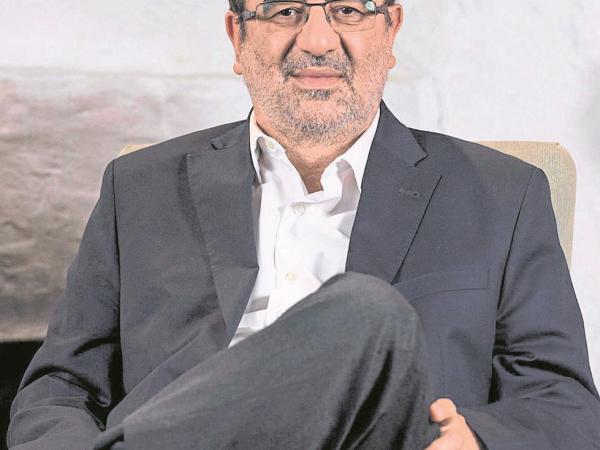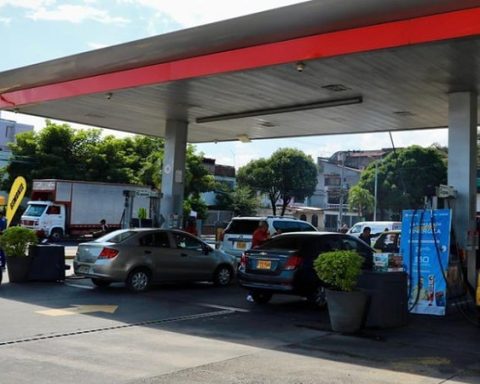Between Wednesday and Friday, the 55th Banking Convention, Inclusive Solutions for Colombia, organized by Asobancaria, will be held in Cartagena.
(Read: Asobancaria, more optimistic about the country’s economic growth)
The challenges posed by increased digitization, the reactivation of the economy after the strong economic crisis, poverty, sustainability, business recovery, rural credit and the proposals of the presidential candidates are some of the aspects that will be discussed at the meeting .
(Read: The five challenges that the country’s financial system must face)
Hernando José Gómez, president of Asobancaria, spoke with Portafolio.
Were the rate reductions of the Banco de la República transmitted to loans or not?
There was a significant reduction in interest rates based on figures from the Financial Superintendency. They fell between 150 and 250 basis points (1.5 and 2.5 percentage points) during the pandemic. Of course they did go down and it was achieved amid the increased risk in the economy.
What is the balance of the sector in this pandemic and the worst economic crisis?
This has been difficult and forced the adoption of extraordinary measures and with all this it is the first time that in Colombia the banks adopted an anti-cyclical policy, since they maintained credit production, which grew by 2% in real despite the fall in the economy 6.8%.
The machinery was maintained and was a cushion that allowed the economy to rebound, which we will possibly see growing above 9% this year.
This also made it possible to recover the business fabric because, despite the fact that 200,000 companies were deactivated in 2020, this year more than 160,000 have been reactivated due to government programs and banks giving credit and that made Colombia one of the five countries with the largest Recovery.
The world economy is in reactivation and rates have begun to react and with the monetary normalization between now and the end of 2022, the Banco de la República rate can rise between 100 and 150 basis points. It is a normal process that will not affect recovery. That will leave us with an interest rate of the order of 3%.
All sectors have been recovering and none is left behind. That is positive and employment is beginning to recover. And to the extent that this happens and there is a recovery and inflation falls, this will allow us to have an increase in GDP from 4 to 4.5% for next year.
Two great challenges for Colombia are to achieve a path in accordance with the goals of the Fiscal Rule that allows reducing indebtedness to 50% of GDP and participating more successfully in international markets to reduce the deficit of the current account of the balance of payments. .
What is the contribution of the financial system in the pandemic?
All sectors must do well and that includes the financial sector that manages, protects and directs Colombian savings to grant credit.
Normally the profitability rate of banks is 12%, which is the average for the Colombian economy. The financial sector reduced it to 4% last year and this year we expect it to reach 10 or 11%.
Where is foreign investment seen in the sector?
As the market in Colombia has been opening up and activity has grown, the market has become attractive and new entities such as Lulo Bank, Nu, BTG Pactual or JP Morgan, to name a few, have been created.
This implies additional investment of equity and there are some initiatives of digital or niche banks that are going to compete with the local ones and that is to the benefit of the clients since they are not only competing with rates but with services.
Is there an imbalance in the requirements for ‘fintech’ compared to the traditional financial system?
We welcome the competition as fintech companies often provide complementary services to banks or are strategic allies. But the problem we have is that although we accept competition, we consider that with equal services there must be equal regulation, such as equity requirements to make deposits, since regulatory arbitrations would be presented and that unbalanced competition.
What challenges does the sector have?
Continue serving customers through digital channels maintaining the offer of services with the incorporation of technology, also continue closing gaps, because although the financial inclusion goal of 85% was exceeded and is above 87%, in the use it is necessary to reach the 77% and we are at 72.6%.
Access to credit for micro, small and medium-sized enterprises and entrepreneurs in the rural sector must be strengthened; while the fourth is to improve connectivity in dispersed rural and rural areas of the country. The last is to advance financial education to attend from schools and in all areas of the country.
What do you think of crypto assets?
You have to be careful because they are volatile and people are exposed to great losses. I support the Superfinanciera pilot with banks, supervised entities and platforms to know how this market works and an evaluation will have to be made in the sector with the handling of these crypto assets, but I am not the most optimistic.
In politics, 2022 will be key …
The other year is going to be a turning point, but we don’t know in which direction. These types of political challenges send signals to their political, economic and social leaders and see what are the demands of society, young people and groups that are excluded from growth. But you also have to be clear about the country’s progress in the last 50 years in per capita income, health, education and other achievements.
And it is that those who promise rivers of milk and honey are those who begin to be listened to by the people, and those of us who believe in the market economy and in an inclusive and democratic country must have answers for the future so that citizens trust in these proposals. .















